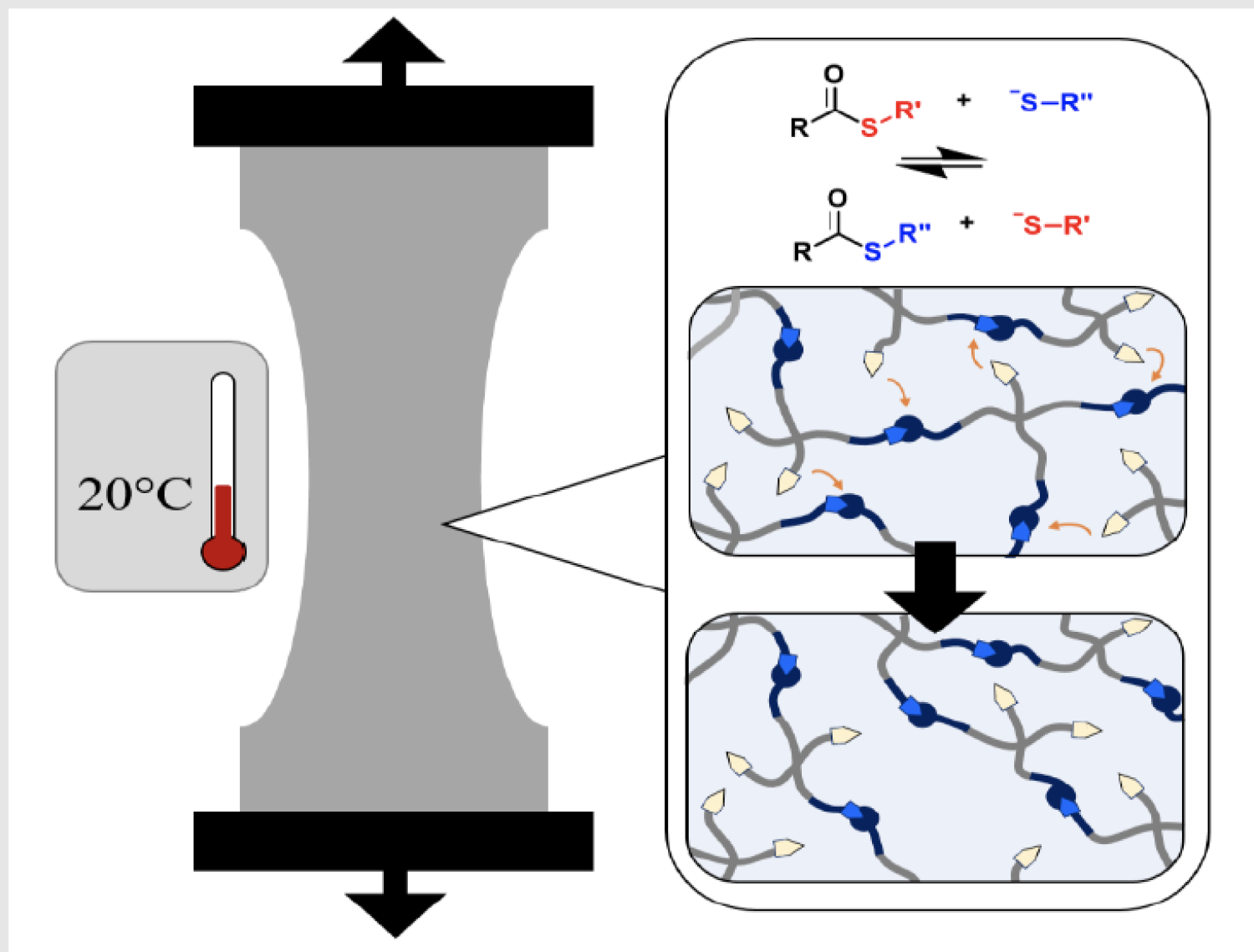Remoldable, Recyclable, and Repairable Thiol-Thioester Polymer Networks

Background
Polymers with covalent cross-links, once formed, cannot generally be reshaped, remolded, or deformed, which is attractive for creating robust materials but these properties can also severely limit recyclability or post-polymerization application. Covalent adaptable networks (CANs) represent an effective strategy to create polymeric materials that retain certain useful properties of crosslinked networks, yet offer a route towards recycling and remolding through covalent bond reshuffling reactions.
Technology
Distinguished Chemical and Biological Engineering Professor Christopher Bowman’s research group has designed a novel thiol-thioester CANs which can be seamlessly incorporated into mature polymerization procedures. Thiol-thioester exchange within these polymer networks gives way to extremely rapid, room temperature plasticity. Because plasticity occurs under ambient conditions and the thiol functional group is sensitive to reagents which can be delivered by light, the approach effectively combines the strengths of both thermal- and photo-induced plasticity. This system was utilized to dictate spatially and temporally where the thermoset would rearrange, relax stress, or remold on both macro- and microscopic scales. Within these networks the exchange was found to be robust, chemoselective, and the material remained of optical quality after recycling and remolding. Furthermore, light can be employed to spatially, temporally, and instantaneously provide or deprive reagents to promote (turn-on) or terminate (turn-off) the exchange.
Graphic above: Conceptual overview of stress relaxation in macroscopic networks via thiol-thioester exchange. When free thiol groups and a catalyst to deprotonate the thiols are present, exchange reactions occur continuously without external intervention at ambient temperature, due to the relatively low activation energy of the reaction
Key Attributes of Thiol-Tioestere Containing Networks
- Method for relaxation of network bonds and alleviate polymerization induced stress
- Ability to turn on and off exchange in networks with light, heat, or other stimuli
- Ability to control, degrade and recycle network components and remain optically clear
- Ability to self-heal and mold the permanent shape of a crosslinked network
What's Next?
This technology is available for exclusive and non-exclusive licensing.
Nicole Forsberg: nicole.forsberg@colorado.edu
The Newsroom
For marketing and communication inquiries or news tips, contact Daniel Leonard, senior marketing and communications specialist for Venture Partners at CU Boulder.
For media inquiries, please visit colorado.edu/news/formedia.


